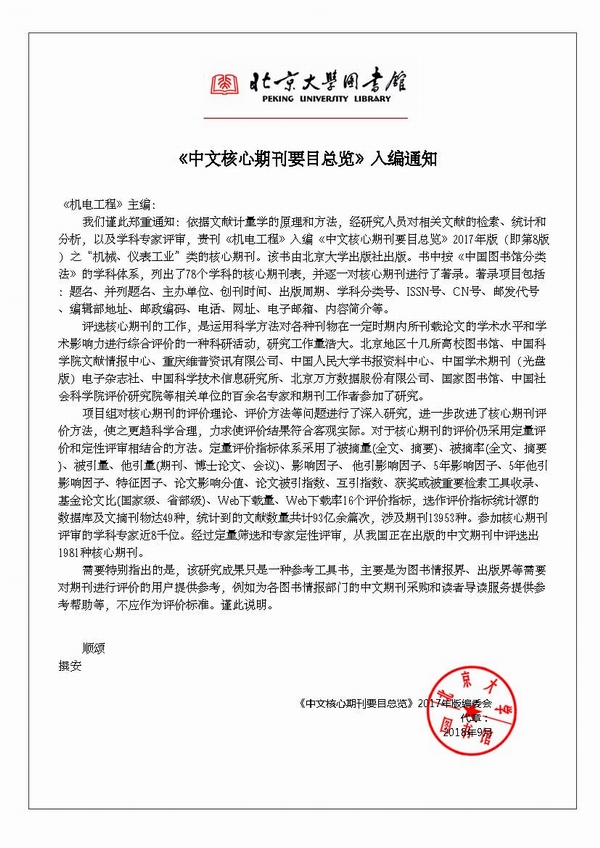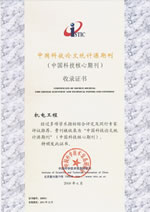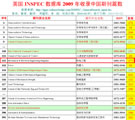
Founded in 1971 >
Chinese Sci-tech Core Periodicals >
British Science Abstracts (SA, INSPEC) Indexed Journals >
United States, Cambridge Scientific Abstract: Technology (CSA: T) Indexed Journals >
United States, Ulrich's Periodicals Directory(UPD)Indexed Journals >
United States, Cambridge Scientific Abstract: Natural Science (CSA: NS) Indexed Journals >
Poland ,Index of Copernicus(IC) Indexed Journals >
International Standard Serial Number:
ISSN 1001-4551
Sponsor:
Zhejiang University;
Zhejiang Machinery and Electrical Group
Edited by:
Editorial of Journal of Mechanical & Electrical Engineering
Chief Editor:
ZHAO Qun
Vice Chief Editor:
TANG ren-zhong,
LUO Xiang-yang
Tel:
86-571-87041360,87239525
Fax:
86-571-87239571
Add:
No.9 Gaoguannong,Daxue Road,Hangzhou,China
P.C:
310009
E-mail:
meem_contribute@163.com
Abstract: In order to solve the problem that the transmission torque and service life of clutch was hard to meet the working demand of the air compressor in automobile air conditioning system, the friction and wear performance of the friction plate material of electromagnetic clutch was studied through experimental ways. Firstly, tribological wear tests were performed on B/Y-type friction-enhancing materials which commonly used on the friction plate,the friction coefficient and friction surface temperature were measured under different working parameters. Secondly, the tribological properties change patterns under different influencing factors were comparatively analyzed. Lastly, the post-wear morphology of the sample after running-in test was observed with scanning electron microscopy, and the primary wear mechanisms was analyzed in conjunction with the comparison of elementary composition. The results show that the speed, the loading force, and the initial roughness of the friction parts are proportional to the friction coefficient and the temperature rise of the friction surface. In addition, the friction coefficient of the two materials finally stabilizes in the range of 0.3~0.45. Among them, the surface microcracks and peeling of B-type materials are more serious, and the Fe content increases by 23.95% after running-in with No. 10 steel materials. Y-type materials have better frictional thermal stability and wear resistance, and the use of Y-type materials is more conducive to improving the transmission torque and service life of electromagnetic clutches.
Key words: mechanical friction and wear; electromagnetic clutch; transmission torque; service life; friction wear test; friction coefficient; wear microscopic morphology








